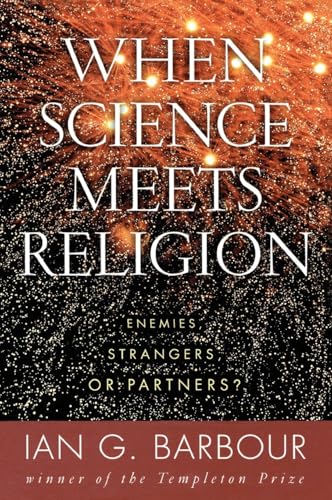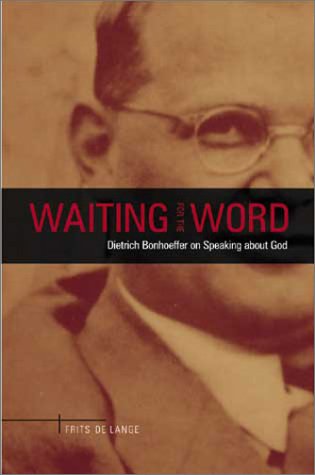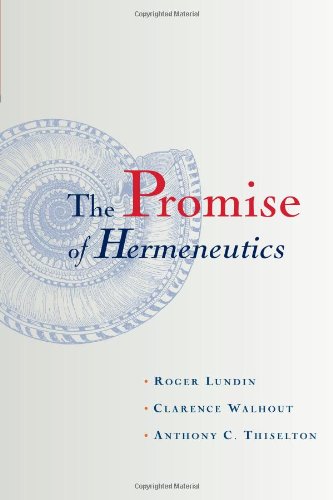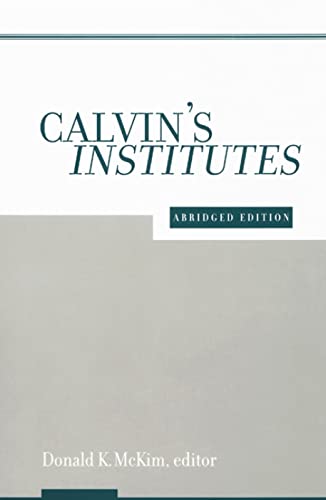Volume 27 - Issue 1
Mistakes of the New Perspective on Paul
By Paul F.M. ZahlThis article was presented as the John Wenham Lecture at the Tyndale Fellowship Associates Conference in June 2001.
Opening Prayer
O Almighty God, who alone canst order the unruly wills and affections of sinful men; Grant unto thy people, that they may love the thing which thou commandest, and desire that which thou dost promise; that so, among the sundry and manifold changes of the world, our hearts may surely there be fixed, where true joys are to be found: through Jesus Christ our Lord. Amen.
(Collect for The Fourth Sunday after Easter, Book of Common Prayer)
This article concerns and criticises the New Perspective on Paul. The criticisms are offered in the light of historical theology and in the light of insights from pastoral care. The history of Christian theology and the reality of parish ministry—the reality of human existence in the perception of its plight and its hunger for a solution—reveal mistakes in the New Perspective that are terminal for its credibility. They reveal a kind of specialist knowledge which is not knowledge at all because it is not broad knowledge. The larger context of Christian history and human experience undoes the truth-claiming of the New Perspective.
What is the New Perspective On Paul?
There are four catch-phrases which the proponents of the New Perspective use to summarise their system. The first is:
Covenantal nomism
Covenantal nomism is the idea that Second Temple Judaism taught that you are in the Covenant from birth, or better, from circumcision. After that, you are in until your failure to observe the Law, on any given point, places you out. But it is easy to get back in. If you repent of your sin and return to the Lord, he is merciful to forgive. Once you do whatever restitution is required for the wrong to be righted, you are back in. Second Temple Judaism was gracious, not legalistic. It was flexible, not harsh. It was forgiving, not inexorable. Judaism in the time of Paul was a religion not of law, but of grace.
Solution to plight
The proponents of the New Perspective1 believe that Paul underwent an experience on the road to Damascus which took place apart from any supposed inner struggle that we expect he might have been having beforehand. Because the character of Judaism as a benign covenantal nomism did not require a solution like Christ, the appearance of Christ to Paul must have come to him as a solution before there ever was a plight. The New Perspective thinks that the old model in Christianity, by which people move from the plight of failed law-keeping to the solution of the grace of God in Christ, is untrue to the experience of Paul. They say that what happened to Paul, and therefore what is central in early Christianity, is the move from solution to plight, not from plight to ‘solution’. So the New Perspective calls for a paradigm-shift in our thinking about Paul and thus, by consequence, about the essence of Christian experience, the essence of the Christian life.
Boundary markers
If Christianity was not about the law in any fundamental sense, insofar as Judaism presented the law in more benign terms than Christians have thought prior to our time, then it was about the law in a penultimate and less deep-reaching way. The real issue in early Christianity was not the relation between Jews and Christians, but rather the relation between Jewish-Christians and Gentile-Christians. This means that the heat which is to be found within the letters of Paul comes from the boundary markers which separate Jewish-Christians from Gentile-Christians, and specifically three things; Sabbath observance, the dietary rules, and circumcision. These boundary markers are what the letters of Paul, especially Galatians and Romans, are all about, not the Law in some larger or more essential sense. It is no wonder that the New Perspective on Paul gives the impression, as Ernst Kaesemann pointed out in 1991, that Christianity is just a variant of Judaism.
Reformation spectacles
The proponents of the New Perspective believe that the wrong interpretation of Paul, which has affected and afflicted Christian thought for so many years, is the direct result of Martin Luther’s ‘Reformation spectacles’, through which Luther projected onto Judaism as Paul related to it in the NT. Luther’s own conception of late medieval Roman Catholicism. Luther thought Paul’s adversary of Judaism was the same thing that Luther was fighting against in Roman Catholicism: legalism pure and crippling as over against the liberating ‘free grace’ of Jesus Christ. So even if Luther was right about the Catholic Church, he was wrong about Judaism in the time of Paul.
The frequent use of the term ‘Reformation spectacles’ to say what is wrong with traditional ‘Protestant’ understandings of Paul fits well with the context of theology in the late twentieth century, and today. This is the post-Holocaust context. It is the context in which the old Protestant view of Paul, which wants to oppose the old covenant of the Jewish Torah to the Christian New covenant in my blood (Luke 22:20), is now understood to be anti-Jewish, even anti-Semitic in nuce. Rejection of the Reformation, which is a big plank of the New Perspective, is appropriate to the context in which we live. It is both sensitive to the Jewish-Christian dialogue and also required in the over-all Western culture of today.
These four catch-phrases, covenantal nomism, solution to plight, boundary markers and Reformation spectacles, sum up the New Perspective on Paul.
Mistakes of the New Perspective
Mistaking one heresy for another
E.P. Sanders mistakes the ‘semi-Pelagianism’ of Second Temple Judaism for ‘Pelagianism’ and thus misunderstands Luther’s critique of the Roman Catholic Church as well as Luther’s grasp of Paul. Sanders is in reaction to something that doesn’t exist. He has therefore founded a movement with an illusory raison d’etre!
In other words: Sanders thinks that Luther’s struggle with Roman Catholicism was a struggle against Pelagianism, therefore Luther projected the ‘straw man’ of Pelagianism onto Judaism. This is untrue. Luther’s objection to the scholastic theology of the Roman Catholic Church was never to its Pelagianism. The Church was never Pelagian. It neither believed that salvation was according to works of the Law nor that the human being had to ‘work’ in order to gain the gracious favour of God. Medieval Catholicism was semi-Pelagian. This is to say, the Church taught that man and God were co-operators in salvation, that grace could complement and supplement human nature, and that ‘I can get by with a little help from my friends’ (The Beatles, Sergeant Pepper’s Lonely Hearts Club Band). Luther and the Church of Rome agreed that salvation was by faith. The difference was that Luther said it was by faith alone. We are not participants with God, we are not co-creators with him, we are not in any kind of relationship that involves mutuality or co-dependence. Salvation is a one way street! The sola in sola fide is the thing.
When you read most accounts of Judaism, both ‘then’ (i.e., in Jesus’ and Paul’s time) and now, you see very quickly that Judaism operates in what Christian theologians recognise as semi-Pelagian categories. Judaism, then and now, understands the will of human beings to be free, more or less. With support of the community, considerable leeway from the standpoint of the gracious God, and the extensive possibilities of repentance, forgiveness and restoration, the human being can fly right. Judaism receives the Christian idea of original sin as overly pessimistic. Judaism shares with Christianity the hope of God’s grace to sinners, as Sanders rightly pointed out. However the NT understands the human condition as less tractable, less subject to effort and amelioration, than Judaism generally does. Luther understood from Paul that Judaism did not go far enough in its analysis of the human problem. Luther’s inherited religion had been semi-Pelagian, as Judaism was and still is.
Sanders and his partners in the New Perspective have missed completely the distinction between Pelagianism and semi-Pelagianism. Therefore they understand neither Luther nor Paul, nor are they aware of the vital difference in anthropology that distinguishes rabbinic Judaism from Pauline Christianity.
‘Solution to Plight’ is untrue to life
A mark of wisdom and truth is when it is unconditionally true. A mark of truth is when it is true across the board, across the disciplines and across the compartments in which people conduct their lives. Thus the new paradigm created by the New Perspective, which understands Paul’s line of thought, and thus the whole logic of Christian origins, to be a journey from solution to plight, rather than from plight to solution, cannot be wise or true. That is because it is obviously untrue to life!
The idea that human beings from any real world we know of actually go from solution to plight is impossible to sustain. It is impossible to sustain if you have had any experience of medicine, psychological counselling, parish ministry, nursing, work with addicts, any of the helping professions. As a person who has been in the practice of parish ministry for over 25 years, I can write that I have never met a single person who, from their own account of reality, was going or ever had gone in the direction of solution to plight.
What the New Perspective people will do is quote Karl Barth, the Swiss theologian, who taught something a little like solution to plight. Barth compared the Christian faith as experienced in life to a person who is recovering in hospital from a terrible car crash. Only gradually, as the patient begins to find out where he or she is and what exactly has happened to him, does the extent of the disaster become apparent. It takes the cure for him or her to see the danger he was in.
Now that is a possible scenario. All those reading this article will have seen it, or something like it, in trauma wards, among accident victims, and sometimes with stroke victims. But it is the exception, because the overwhelming majority of people are those with a problem in search of a cure. True, a person may not know what the real problem is. He or she may not see the extent of it, the consequences of it, the origins of it; but the person comes, initially, with a perceived need. The person comes to you seeking help!
This is what everyday English now calls a no brainer. In the initial situation of life, human beings go from plight to solution and not the other way around.
Because Sanders has misunderstood Second Temple Judaism in its location on the spectrum of classical Christian thought, he has misunderstood Paul’s plight; it doesn’t make sense to him. Sanders has therefore had to improvise the ‘plight to solution’ scenario. Because it has little contact with reality, with the way people work in everyday life, this scenario cannot stand up. I predict it will be discredited.
An old idea
When I was studying in Tübingen I began to hear about the supposedly new insight that the letters of Paul were really about boundary markers. This was the claim that Galatians and Romans are not about issues that separate Judaism and Christianity, but rather concern issues that separate Jewish-Christians from Gentile-Christians. For Paul, the issues that separate Jewish-Christians from Gentile-Christians are the three boundary markers of circumcision, dietary laws, and Sabbath observance. Paul is not worried about the Law in some ideological or meta-sense, but only about the surface aspects of it that are worrisome to Gentiles.
I do not believe that this is true. It is a sort of ‘Christianity-Lite’ view of the Pauline letters. Common sense sweeps right in and asks, ‘Is that all that it’s about? How could Paul have become so worked up and written in such exalted and large theological language about boundary markers?’ That would be like saying that the problems of young people today are a matter of tattoos and body-piercing. Would Paul have crossed and criss-crossed the Roman world, would he have agonised and hurt as he did, for a mess of pottage such as diet, seventh-day customs, and an act of … body-piercing? Again, this cannot possibly be true, for it fails to convince in the forum of a broad understanding of life and human motives. It simply fails to make sense that it all could have been about boundary markers.
What is worse, in the scholarship, is that E.P. Sanders and others who follow this line seem completely unaware, so far as I have read their works, that they are talking about an issue that Christian theologians have been looking at for centuries and centuries. This is the issue of the ‘ceremonial’ law versus the ‘moral’ law.
I was only in Form V when my teacher of religion told the class that the big issue during the time of Paul was the relative weight of the ceremonial law versus the moral law. He said that some Christians argued that Christ abrogated the whole law, or the law in a moral sense; while other Christians argued that Christ had abrogated only the ceremonial law, which was those things like circumcision that separated Jews from Gentiles. Little did I know in 1966 that I was hearing what it would take me ten years of university-level work to find out about again.
I argue that Pauline theology sees the moral law as altered by Christ, in its dynamic within the human situation, just as powerfully as the ceremonial law has been altered, or set aside. But to pronounce that this is some new insight, which takes the ‘heaviness’ away from post-Holocaust NT studies, is wholly false.
The problem with un-cross-fertilised research
I have tried to show in a very shortened way that the New Perspective on Paul has made three mistakes that are fundamental. It has failed to understand what historical theologians know from the start, that Luther’s problem with Roman Catholicism was the problem of semi-Pelagianism, not of Pelagianism. Sanders is projecting his own misunderstanding of Luther onto the supposed Reformation (mis)understanding of Paul. Sanders and others of the New Perspective are reacting against a straw man.
I have also looked to the helping professions and to pastoral ministry for help in understanding the scheme of solution to plight, which is a linchpin of the New Perspective. It is simply not true to reality to believe that any person moves, in his or her own mind, from solution to plight. As the saying goes, ‘that dog won’t hunt!’ The opposite is what really happens. The New Perspective has failed to look around at life. I wish that these writers could spend some time in a hospital, or at an Alcoholics Anonymous meeting, or in the ministerial study of an everyday parson.
Finally, the supposed discovery that Paul is really thinking principally about boundary markers is a very old and familiar idea, that there is a distinction between Law as the regnant dynamic in religious ceremony and Law as regnant within the moral life of the human species. It has been a point of contention from the very beginning: the meaning and extent of Paul’s words in Romans 10:1–4. The issue has never been resolved to everyone’s satisfaction, but it always blows over the minds and hearts of those who study Paul. It is a perennial thing, not a new thing.
It is possible to say that the main trouble with the New Perspective on Paul is its proponents not having looked widely and broadly enough in their work. They do not know their theology in historical context. They do not seem to realise that Paul is writing to real people and that human interactions have not fundamentally altered with the passage of time since the first century. How else can we explain that Paul’s letters still speak to people today? People come up to me time and time again to say what the Book of Romans, for example, means to them in their actual lives. Thus it is that the experience of working with people must be factored in if we are to understand what Paul is really saying.
I believe that E.P. Sanders and others in his train of thought know a great deal about one thing (i.e., Second Temple Judaism), but not enough about other things that relate to their one thing. We might say that their knowledge is deep but not broad. It is certainly not broad enough. Because the New Perspective is not rooted in reality, the reality of human experience and the long Christian tradition of engaging with that reality, the New Perspective will probably suffer the fate of the Soviet Union’s famous ‘five-year plans’. They came to nothing, finally, because they had disconnected from the reality of real people.
1 The best known scholars of this school of thought are Krister Stendahl, E.P. Sanders and James Dunn. The key reference works are Stendahl’s 1968 essay. ‘Paul and the Introspective Conscience of the West’, originally published in the Harvard Theological Review and now to be found in his Paul Among Jews and Gentiles: Sanders’ 1977 book Paul and Palestinian Judaism; and Dunn’s 1983 essay entitled ‘The New Perspective on Paul’, originally published in the Bulletin of the John Rylands Library and now to be found in Paul, the Law and the Jewish People.
Paul F.M. Zahl
Birmingham, Alabama






